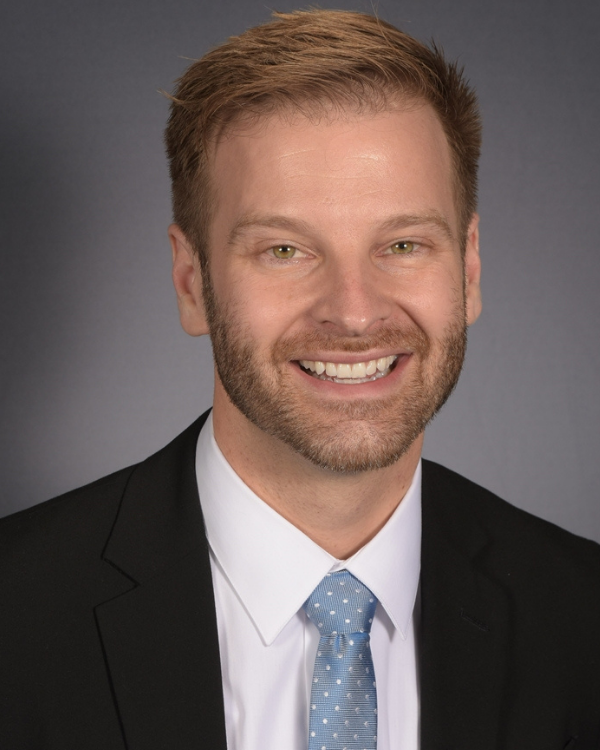
Blog
Our blog provides readers an opportunity to hear from the Advance Illinois staff and partners on education policy issues affecting Illinois students and beyond.
On-the-Ground—The Hidden Crisis: Why Rural Districts Face Unique Teacher Workforce Challenges
Advance Illinois’ The State We’re In 2025 report finds that across Illinois, districts are struggling to recruit and retain qualified teachers — but rural schools face a unique set of barriers. Like their urban counterparts, they report higher vacancy rates, more novice teachers, and greater reliance on provisional licenses compared to suburban peers. However, the key difference is that rural schools have the highest rates of teachers working out of field or teachers teaching in a grade or content area for which they do not hold the proper credential. This affects students’ access to high-quality instruction, especially in specialized areas such as career and technical education (CTE).
As districts grapple with recruiting, training and retaining teaching talent across the state, some rural districts are innovating out of necessity. Still, their efforts’ long-term sustainability will depend on whether state-level policy and resources align with the ingenuity happening at the local level.
The Numbers Behind the Challenge
Data from the recent State We’re In 2025 show how deeply shortages affect small districts. When positions go unfilled, the consequences are immediate with fewer courses offered, staff stretched thin, and higher turnover costs.
“When you lose even a single staff member in a rural district, it has a ripple effect across everything — programs, student opportunities, and the community as a whole,” explained Dr. Joshua Stafford, superintendent of Vienna School District.
The Association of Illinois Rural and Small Schools (AIRSS) whitepaper, The Chronic Rural Educator Shortage and Hopeful Actions to Address It, notes that since 2022, reliance on substitutes and retirees has grown sharply. More than half of rural vacancies are now covered by under-certified or out-of-field staff. Geography makes things worse: the farther a district is from major highways or population centers, the harder it is to attract and keep teachers. Limited resources also mean rural schools often can’t match the salaries and benefits offered by larger districts.
Why Career Technical Education is Hit Hardest
Staffing courses that provide students with academic and technical skills for high-skill, high-demand careers like Career and Technical Education (CTE) programs illustrate the problem most clearly according to John Glasgow, director of the Rural Illinois Career Tech Ed Project with AIRSS.
“It’s hard enough to get anybody to go into the education field right now… That’s especially true for CTE. There are very few programs out there specifically for those who want to be, for instance, like a shop teacher or an ag [agriculture] teacher,” he said.
As researched by a 2023 National Rural Education Association report, Why Rural Matters 2023: Centering Equity and Opportunity, school funding formulas tied to enrollment deepen the challenge. With smaller student populations, rural schools are often expected to operate in the same ways that larger districts function with less funds. Even if funding was adequate, Glasgow acknowledges that distance and size mean it may not make sense for every rural school to run every CTE field. That reality encourages schools into regional collaborations that can be difficult to sustain.
Creative Solutions Born from Necessity
Rural districts are adapting in creative ways. For example, in Vienna, Illinois the school district is making opportunities for high performing middle school teachers to move into high school classrooms while they earn new endorsements. Others tap professionals with years of industry experience to enter classrooms through alternative licensing pathways.
Stafford offered one example: “Our nursing program… the person who ran that program for 30 years here never had a PEL [Professional Educator License]. She was an RN with hospital experience and masterfully led the program. Graduates from that program now staff hospitals across the region.”
These solutions don’t solve the shortage, but they demonstrate the value of flexibility and the deep expertise already present in rural communities.
The Collaboration Imperative
Unlike large suburban and urban systems, rural schools must overcome geographical distance to collaborate with neighboring districts, local business and regional organizations. This reliance on partnerships adds a layer of complexity to rural leadership, requiring skills in coordination and resource-sharing that go well beyond traditional school administration, which Glasgow acknowledges can be hard to sustain over the long haul if entities are not unified or coordinated.
But rural schools are finding other innovative ways forward. The Southern Illinois Future Teachers Coalition began around 2017 with a modest $14,000 grant to address the teacher shortage that is being experienced with targeted programming at the local level in Southern Illinois. Today it has grown into a network of 25 schools working with universities, community colleges, and regional education offices to cultivate local teaching talent that’s delivering impact. =
Stafford recalled a recent round of teacher interviews where all three candidates — from different high schools in the region — had participated in the coalition as students.
“It was just this full circle moment,” Stafford said.
Looking Ahead
The Advance Illinois the State We’re In (2025) report finds that rural districts in Illinois have higher vacancy rates in addition to educators teaching out of field. However, the findings also show that educators in rural districts tend to have higher attendance rates.
Glasgow at AIRSS emphasizes that addressing rural educator workforce challenges requires policies that account for both adequacy and access. It calls for rethinking educator preparation, supporting under-certified staff in becoming fully credentialed, ensuring rural equity in funding and curriculum, and creating stronger collaborative efforts between schools, higher education, and state agencies—strategies that Glasgow and Stafford reinforced.
And there’s no time to waste or wait on outside solutions, said Stafford. “No one’s going to ride in and save us from teacher shortage… locally and regionally, we have to act and do something.”
Additional Resources:
Maty Ortega Cruz is a Senior Community Engagement Associate for Advance Illinois.
The Imperative to Support Early Career Teachers
The first year of a job in any career is challenging: new responsibilities, new colleagues, figuring out how to add more toner to the printer. Teaching and supporting students is no exception. Ask any teacher or clinician about their first year in the role - you might hear words like "tough," "overwhelming," and "draining."
Fortunately, challenging environments are where new professionals, including new educators, grow. Research shows that on key measures of teacher effectiveness—like impact on student test scores—the most pronounced growth happens in the first five years.
Unfortunately, sometimes the difficulties new educators face goes beyond what is fair or reasonable. As the figure below shows, teachers are most likely to leave the profession in those first five years, with particularly high rates of attrition for Black early career teachers. By evidence of their entering the profession, educators are deeply committed to students, and most see their teaching as having a positive impact. But when they experience poor working conditions, including relationships with leadership, compensation, and safety, they leave. Black teachers are more likely to teach in underfunded and high turnover schools, which likely drives some of the racial disparities in rates of attrition.
Why Early Career Retention Matters
You might now ask yourself: isn’t some turnover just inevitable in any job? Indeed, data suggests that educators are either as or less likely than other professionals to leave their employer. It might be tempting to say that to address challenges like teacher shortages and diversity we ought to just focus on getting a robust pipeline of new people who can fill roles when they turnover and forget about retention.
But early career retention matters in its own right, too. Research tells us that access to highly effective teachers is a vital ingredient for student success. Students should not always or only be taught by those still in that early period of growth - but the reality is that students in the highest poverty districts in Illinois are twice as likely as those in lower poverty environments to be taught by novice educators. Furthermore, attrition is not always about leaving the profession but also educator movement from more challenging under-resourced environments to more well-resourced schools. If we want new teachers and clinicians to remain in the profession to develop into highly skilled tenured educators, we need to focus on facilitating opportunities for growth in the first 5 years while addressing the challenges novice educators face, particularly in chronically high-turnover environments.
What Illinois is Doing About It – And What’s at Risk
Illinois has taken important steps to support early career educators. Alongside the myriad other investments that the state is making to address challenges in the educator pipeline from recruitment to veteran educator retention and leadership, it is making investments in its new educators. Illinois has set aside ESSER dollars to fund a state mentoring and coaching program that pairs new teachers and clinicians with peers who can help orient them to a new school and make connections with veteran educators across the system who can offer content area specific coaching that builds new educators' skills. This strategy is a sound one: research demonstrates that well designed mentoring programs improve teacher effectiveness and retention.
Here's the problem: the state's mentoring and coaching program is not on track to continue — proposed budgets for FY26 so far make no mention of this crucial program. The program was funded through federal stimulus dollars (ESSER) that were recently clawed back by the federal government (but were regardless planned to be used up by the end of the year). While the General Assembly did transition some ESSER funded programs to the state budget last year, this program was notably absent. This budget season, despite the importance of supporting early career educators, mentoring is once again not a part of the Governor's proposed budget.
My team spends a lot of time looking at what the state is doing to address each facet of the educator pipeline, from early recruitment to pathways into leadership. There are an impressive array of programs addressing the challenges at each step of the pipeline, with investments in FY25 totaling over $80M. But when it comes to our early career educators, there is notably only one program specifically focused on supporting them: our state's new teacher and clinician mentoring and coaching program. Ending this program would leave a gaping hole in an otherwise robust educator pipeline strategy.
When we don't do everything we can to cultivate a strong and diverse educator pipeline, it's our students who pay the price. Looking forward to a proposed budget in FY26, I hope legislators recognize that and do everything in their power to keep investing in the supports that early career teachers and clinicians need to grow into the educators they - and we - dream them to be.
Mercedes Wentworth-Nice is a Senior Policy Associate for Advance Illinois.




